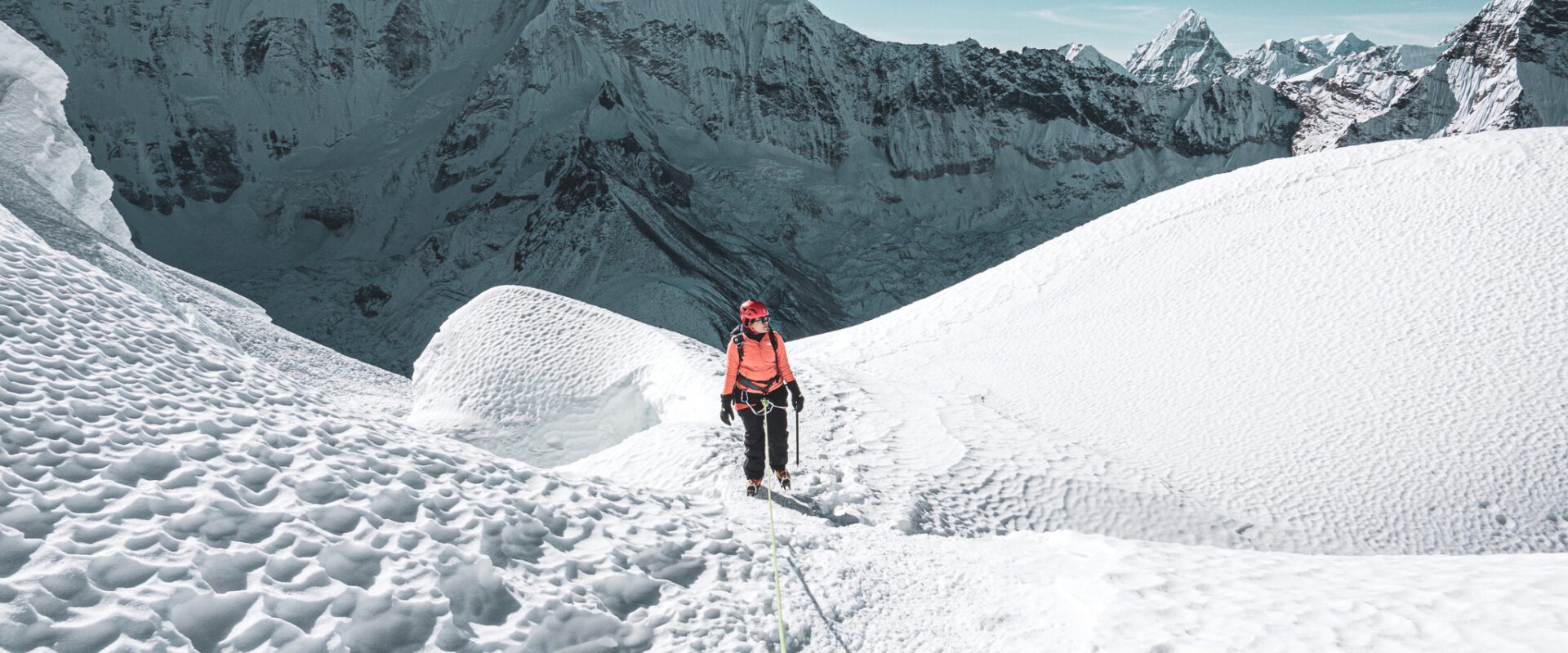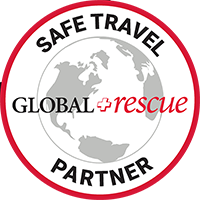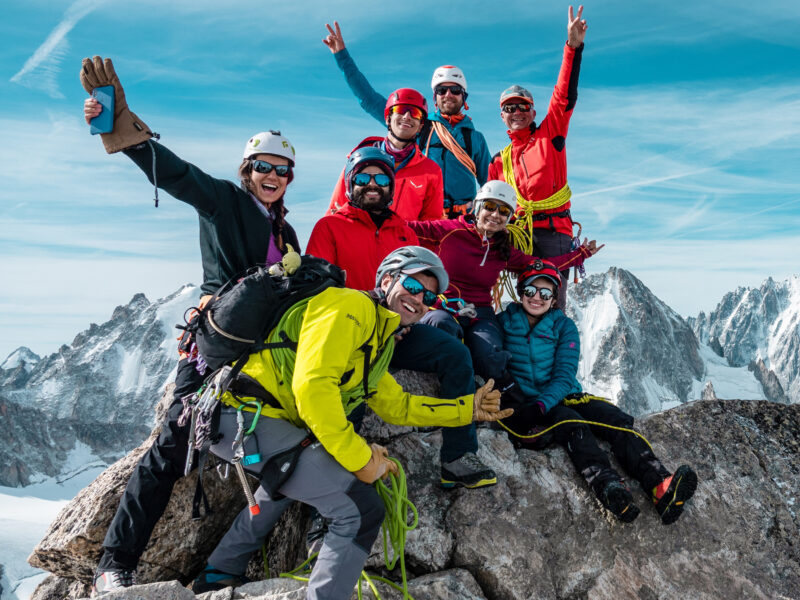BY Hazem El Shamy | June 20 2025
How to Train for Island Peak

Island Peak (Imja Tse) is more than just a beautiful summit tucked into the heart of the Khumbu. At 6,189 meters, it’s a true Himalayan experience, one that merges trekking through ancient Sherpa villages with a challenging, technical climb to the top. For many, Island Peak is a gateway to high-altitude mountaineering. But make no mistake, this isn’t a walk-up. It demands respect, preparation, and a solid game plan long before you tie in at base camp.
So how do you train for a mountain like Island Peak?
Let’s break it down.
1. Build a Strong Endurance Base
You’ll be trekking for nearly two weeks before even getting to the mountain. Long days on your feet, big elevation gains, and the constant pull of altitude — your body needs to be ready.
What to do:
Hike or ruck with a weighted pack (8–12kg) 2–3 times per week.
Aim for at least one long hike per week (4–6 hours).
Focus on time-on-feet rather than speed: think slow, steady, and sustainable.
2. Train Your Legs to Climb
Island Peak’s summit push includes steep snow slopes and fixed rope sections. Your quads, calves, and glutes will be doing the heavy lifting.
What to do:
Hill intervals: Find a steep hill or stairs and do repeat climbs with your pack.
Weighted step-ups: Add a box and a backpack to simulate summit day.
Include strength sessions 2x a week: squats, lunges, deadlifts…but keep it simple and functional.
3. Get Comfortable With Altitude
No amount of sea-level training can fully replicate high altitude, but you can prepare your body to adapt more efficiently.
What to do:
Trek at altitude if possible, even moderate elevations help.
Use acclimatization protocols in your training treks (e.g. climb high, sleep low).
Prioritize hydration, sleep, and nutrition — they matter more at 5,000m.
4. Learn the Ropes (Literally)
Island Peak isn’t Everest, but it is a mountaineering objective. There’s a glacier crossing, crevasse navigation, and a final steep headwall protected by fixed ropes.
What to do:
Take a basic mountaineering course (or refresher) with ropework, crampons, and ice axe use.
Practice jumaring on a fixed line in a controlled environment.
Learn how to descend on a figure 8 because rappelling skills are essential for the summit day descent.
5. Mental Preparation Is Half the Climb
Summit day can be long, cold, and uncomfortable. You’ll start in the dark, climb with a headlamp, and push yourself through fatigue. Your mindset matters.
What to do:
Train in tough conditions during early mornings, bad weather, and with tired legs.
Visualize the climb: the ridgeline, the headwall, standing on the summit.
Remember your reason for doing this; it’ll carry you when your legs can’t.
Final Thoughts
Training for Island Peak is about more than fitness, it’s about resilience. Show up well-conditioned, mountain-aware, and mentally grounded. Give yourself 3–6 months of focused preparation and, more importantly, don’t underestimate the mountain. Island Peak rewards those who respect it.
We’ve seen firsthand what it takes to reach that summit. And trust us: standing on top of that icy ridge, with Ama Dablam watching from across the valley, is something you’ll carry with you long after the rope is coiled and the boots come off.
Climb on!
About The Author
Hazem is an avid high altitude mountaineer and adventurer that has helped lead hundreds of climbers to summits across the Himalayas, Andes, Atlas, and Caucus mountain ranges. He believes that inspiration is best served on a sharp ridge 6000 meters up in the sky, and is committed to making big mountain goals more achievable to the everyday climber.
About Life Happens Outdoors
At Life Happens Outdoors, we believe in the power of nature to transform lives. As proud members of the Adventure Travel Trade Association (ATTA) and the World Travel & Tourism Council (WTTC), our team of certified guides and outdoor professionals is committed to the highest standards of safety, sustainability, and excellence.
Discover more about our story and mission on our Meet LHO page, or explore our curated adventures such as the Tour du Mont Blanc Trek, the Climb of Kilimanjaro, and Chasing the Northern Lights.















